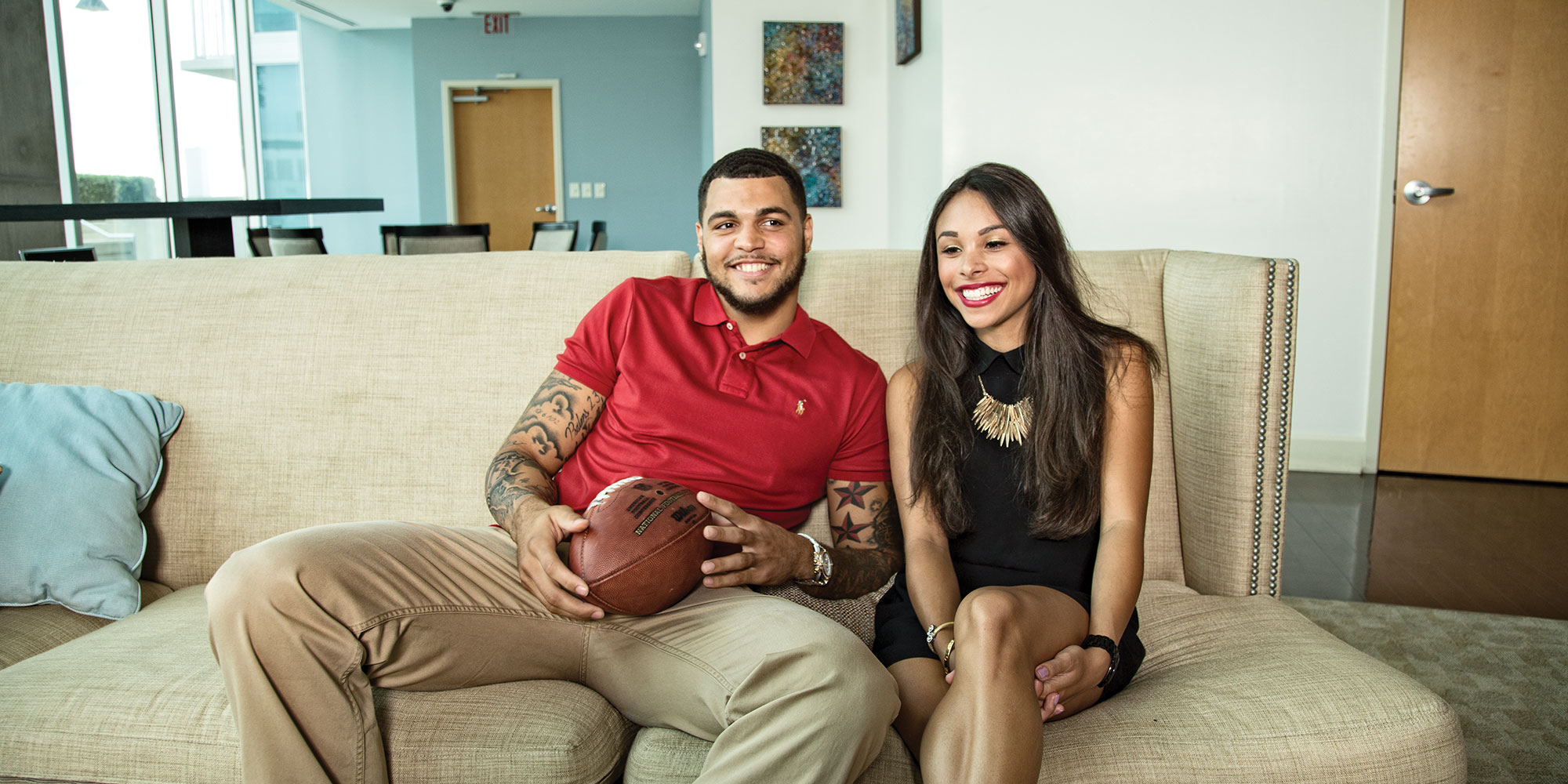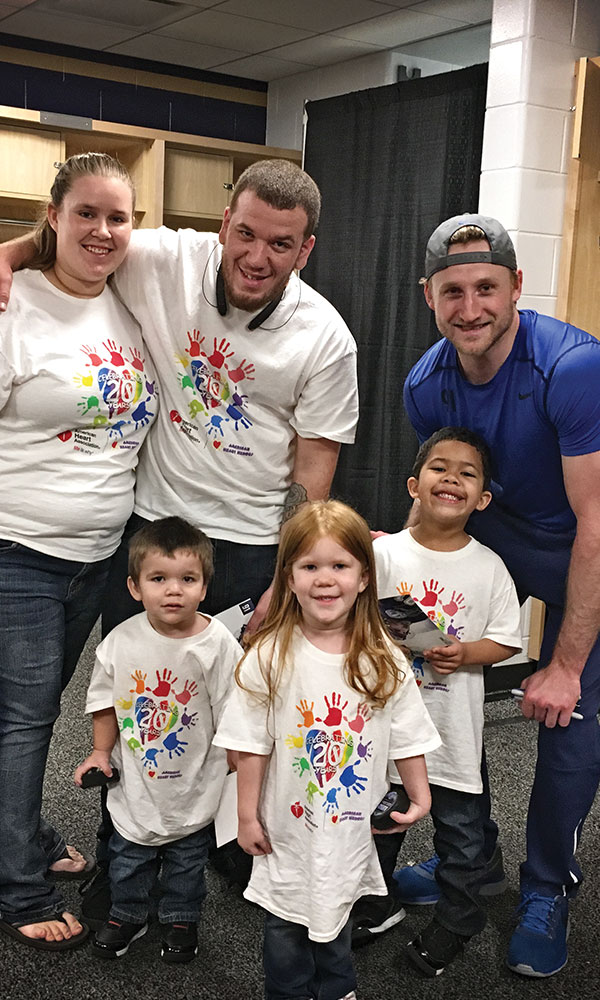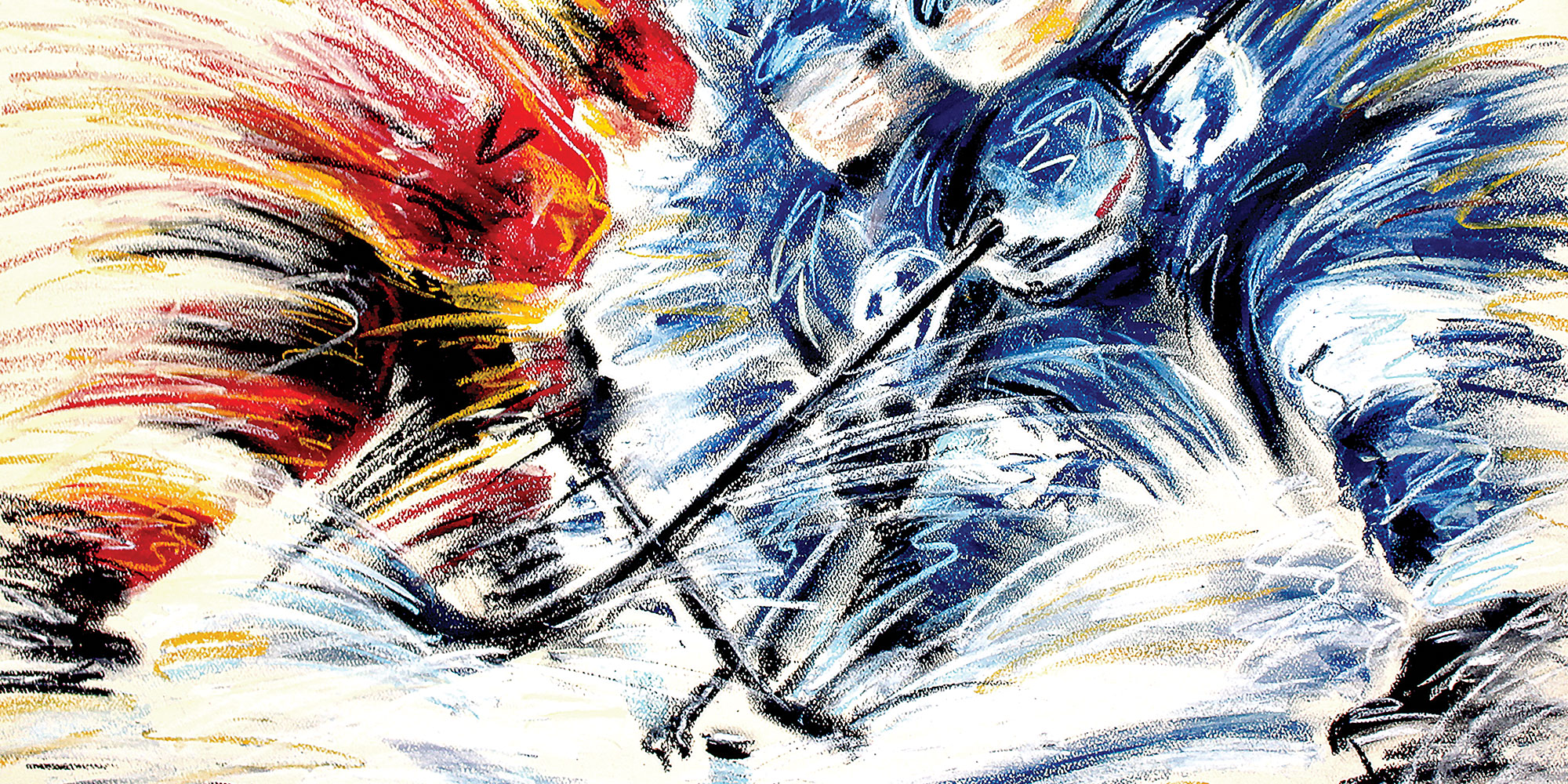The Tampa Bay Rays are doing whatever they can to make a new baseball stadium in Ybor City a reality — and having a remarkably good season at the same time. The Tampa Bay Lightning are fresh off another deep playoff run and are looking to shore up their roster for next season with some key off-season acquisitions. The Tampa Bay Buccaneers are preparing for training camp, hoping a few new players will bring them ever closer to the elusive postseason.
These are the headlines of Tampa Bay’s major league sports teams — the reasons we cheer them on, hang our heads when they lose and proudly wear their colors around town. But perhaps more important than what they are doing on the field is what they are doing off of it to benefit the community.
Some of these efforts have purposely been made more visible to help shine a light on worthy causes. Perhaps one of the most well-known philanthropic efforts in local sports is the Lightning Foundation’s Community Hero program. Founded with a $10 million grant by the Vinik Family Foundation in one of Lightning owner Jeff Vinik’s earliest major commitments to Tampa, the program honors one Community Hero (or Community Hero of Tomorrow, for individuals under 25) at each home game and presents them with a $50,000 grant to give to the charities of their choice. Since the beginning of the 2011-12 season, the program has given more than $61 million to 323 Community Heroes; more than 400 different organizations have benefited. With an additional $10 million pledge from Vinik in 2016, the program will continue at least through 2020.

One of the Tampa Bay Buccaneers’ biggest initiatives can literally be seen throughout the community. As part of the education-focused Buccaneers Academy program, the team has built court-sized shade structures — effectively a permanent red or white open-air tent — at 24 underserved local schools. Students then have a safe place to run, play or learn outdoors and under cover. The team donated one of these structures to the Tampa Downtown Partnership in 2016 to use for the ice rink at Curtis Hixon Park’s Winter Village. Today, the partnership uses the shade structure to create covered activity areas at events year-round.

The Tampa Bay Rays similarly focus on kids and education, from Rays employees partnering with Big Brothers, Big Sisters to mentor St. Petersburg students to the Rays Jersey Program — a partnership with Suncoast Credit Union to donate major league-quality jerseys and hats to more than 10,000 T-ball players and coaches around the Tampa Bay area. Sponsored annually by the Rays wives, Rays on the Runway is one of the team’s largest fundraisers. The fashion show, featuring Rays players, their wives, and kids from the Children’s Dream Fund, has garnered over $100,000 each year since 2005. That money helps the charity grant the wishes of children with life-threatening illnesses. In 2013, the fund’s executive director, Cynthia Lake Farrell, nominated the Rays for the Association of Fundraising Professionals’ Outstanding Philanthropic Corporation Award for their contributions to the fund and more than 1,200 other organizations. The Rays won. “The Tampa Bay Rays have partnered with the Children’s Dream Fund to make an impact on the lives of sick children in our community since 1997, before the team first took the field,” says Farrell. “The management and players have shown a deep and long-lasting commitment to making children’s dreams come true.”

Beyond their respective teams’ initiatives (which alone run the gamut from hospital visits to charity fishing tournaments to posing for pet calendars), a number of Tampa Bay’s pro athletes have found their own ways to give back. For some, like the Lightning’s Ryan Callahan, the Rays’ Chris Archer and the Bucs’ Mike Evans, that meant creating their own foundations to benefit a cause close to them. The Lightning’s alternate captain and his wife, Kyla, started the Ryan Callahan Foundation in 2016 to help children and families coping with pediatric cancer escape some of the stresses of illness. The foundations sends them on vacations around Florida, hosting them at Lightning games (where the kids, known as “Cally’s Crew,” get to meet Callahan) and raises money for national pediatric cancer organizations.
Inspired by the giving spirit of his grandparents, who adopted him as a child, Rays pitcher Chris Archer established the Archway Foundation to “bridge the gap” for underprivileged kids. Locally, Archer has donated baseball equipment to Police Athletic Leagues, the YMCA and other organizations; this season, he is partnering with the Rays Foundation and Crown Automotive to donate $25 for each strikeout he completes to Starting Right, Now, a charity working to end teenage homelessness. The centerpiece of his efforts, though, is the Archers, a youth baseball club in his hometown of Clayton, North Carolina. Knowing the sometimes prohibitive costs of elite travel baseball, Archer and his foundation cover all costs to participate on the team, including uniforms and coaching. In return, the players are required to embrace good habits, like volunteering and completing reading assignments.

Like Archer, wide receiver Mike Evans’ childhood spurred the creation of his nonprofit, the Mike Evans Family Foundation, which he launched with his wife, Ashli, in December. Evans’ focus is two-pronged: provide financial assistance to students who have been accepted to college but cannot afford it, and help women and children dealing with domestic violence. Evans has spoken about the horrific domestic violence he faced as a child, including the murder of his father. “I grew up in a household with domestic violence, and I know how hard that can be,” he says in a statement on his website outlining the foundation’s goals.

For other players, longtime commitments to a Tampa Bay sports team have led to the same with local charities. Lightning captain Steven Stamkos has been an active supporter of the Ronald McDonald House of Tampa Bay for more than six years and was named the organization’s Award of Excellence recipient in 2012 for his efforts to bring awareness and funds to the charity, including donating money for each goal he scored throughout multiple Lightning seasons. When they wed last summer, Stamkos and his wife, Sandra, requested that their guests donate to the charity instead of purchasing gifts — raising over $34,000 that was split between the Ronald McDonald Houses in Tampa Bay and Stamkos’s hometown of Toronto. This past season, the couple hosted families staying at the Ronald McDonald House in Tampa at Lightning games.
In-game experiences like these are a key part of all three teams’ efforts. Similar to Chris Archer’s Strikeout Homelessness initiative, Lightning players raise money to fight hunger each time they put the puck in the back of the net through the Goals for Food program. The collaboration with Mosaic gives $500 for each goal the team scores and $5,000 for each hat trick scored to Feeding Tampa Bay. “One of our primary community investment focus areas is food and responding to food insecurities throughout our operational areas,” says Mosaic spokeswoman Nikki Foster. “Mosaic has partnered with the Lightning for five years to shine a brighter light on the issue.”
Over at Raymond James Stadium, the Buccaneers donate tickets to groups from local charities handselected by players, coaches and the GM to attend games; the Rays’ Home Run Club (started by former Rays player James Shields) hosts over 100 children in foster care at Tropicana Field each season in a private suite. Events sponsored by the Home Run Club and the Heart Gallery at the stadium have even resulted in adoptions for local children.
In part because the teams give to thousands of different causes between them, some efforts have gone a bit under the radar. For one, the Lightning have put the spotlight on local artists for the past six years during their annual Celebration of the Arts. Representatives from the Tampa Museum of Art, Museum of Fine Arts and others help the Lightning select the submitted Tampa-inspired pieces to be hung for Amalie Arena’s 1.5 million annual visitors to see and purchase. All proceeds go directly back to the artists, and the team awards 10 artists a cash prize each year. Another quieter effort was the five-year, $375,000 commitment made by the Buccaneers in 2015 to support a pediatric brain and neurologic medicine residency at Johns Hopkins All Children’s Hospital. During the program residents learn to treat traumatic brain injury, concussions, strokes and epilepsy in kids. The Glazer Family Foundation, created by the team’s owners, have also funded the Vision Program since 1999. Today, a Bucs-branded RV equipped with a doctor’s office and lab travels to Hillsborough County schools to bring free eye screenings, exams and eyeglasses directly to low-income students.
Responsible for putting millions of dollars into the community each year, Tampa Bay’s pro sports teams have put to rest the myth of the egotistical sports figure, at least locally. Sure, their Super Bowl and Stanley Cup wins may be what decorate the signs welcoming newcomers to Tampa, but their true legacies lie in the good done far from the playing field.



